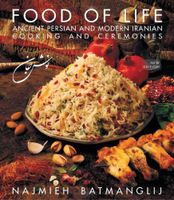Advertisement
The Story of Saffron
Appears in
Published 2011
Long treasured as a medicine, perfume, dye, and seasoning, saffron consists of the golden stigmas of the autumn flowering purple crocus, Crocus sativus. It takes the stigmas of 50,000 to 75,000 blossoms—an acre of flowers—to make one pound of the spice. These must be picked from the crocus by hand, making Iranian sargol saffron threads, currently selling for about $100 an ounce, the most expensive spice in the world.
The beautiful little saffron crocus is native to Iran and Southwest Asia. The name comes from the Arabic za’faran, meaning “yellow, ” which may be the Arabized form of the Persian word zarparan, meaning “golden stamens” (or “golden feathers”). It has been cultivated throughout the region since ancient times. The Persians’ Sumerian predecessors, from the third millennium bce, called saffron “the perfume of the gods”; in fact, there exists a Sumerian recipe for beer, intended no doubt for the most exalted of drinkers, that includes toasted pomegranate seeds, myrtle, oak, sumac, cumin, and, most importantly, saffron.

